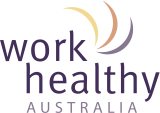
When communication breaks down, recovery slows down. Effective collaboration is the difference between lost time and lasting outcomes.
When a worker is injured, a lack of collaboration and communication between key stakeholders can lead to significant consequences, including longer recovery times, an increased risk of re-injury, and decreased worker engagement.
In this article, we explore strategies you can adopt to improve collaboration and communication in injury prevention and management at your organisation.
When a worker is injured and needs to step away from their designated role, your workplace injury prevention specialist will implement a number of strategies to ensure a speedy recovery. This will include early intervention, effective treatment, tailored rehabilitation and implementing a safe return to work strategy.
An underrated and often overlooked piece of this puzzle is the collaboration between the provider, the client contact, the return to work / HR manager and the department supervisor, to ensure all strategies and advice are implemented.
When communication or collaboration between these parties is lacking, this can then lead to the worker requiring longer time off their role, increased chance of re-injury, and general worker dissatisfaction. In this article, we will explore this collaboration and give tips on how it can be improved.

4 ways communication can break down in injury management
1- The details of the diagnosis, return to work plan and duties recommendations aren’t communicated from provider to site contact:
- Results in mismanagement of the worker and injury
- Client won’t understand the seriousness of the injury and the importance of following the recommendations
- Nothing is implemented and the injury takes longer to recover or becomes more serious
2- The site contact not passing recommendations to supervisor, or supervisor not implementing recommendations:
- Results in the worker continuing to work in the role that caused the initial injury, or being placed there when that department is short on workers
- Worker does not recover from the injury or potentially makes it worse, leading to time off work
- Worker grows disgruntled with workplace due to being told one thing by the provider and something different by their supervisor.
3- Return to work / HR manager not overlooking the whole process and managing the injury through the week:
- If no one is overlooking the management of the worker/injury throughout the week, issues or complaints that are raised by the worker may not be dealt with for up to seven days until their next onsite health provider appointment.
- Can lead to longer recovery time and potential re-injury or aggravation.
- Worker may have no one to turn to for assistance during the week if their supervisor is away or changed.
4- Departments don’t work together to manage an injury:
- Worker can get lost in the wash if they need to cancel their appointment due to being unwell or away.
- If there are limited appointments with your onsite health provider during the week, priority needs to be given to workers who have more serious injuries. If there isn’t good communication between all parties about each worker’s case, less serious injuries may get appointments, and the ones that need it may need to wait several weeks between appointments
- If communication isn’t great between all parties, information or recommendations may get lost, leading to mismanagement of the injury
As you can see, there are a number of ways that the collaboration and communication can break down between each party, which can lead to a number of unwanted scenarios.

Practical steps to improve communication
To reduce the risk of mismanagement and delayed recovery, all stakeholders must take proactive steps to ensure timely, accurate and consistent communication throughout the injury management process.
- Good notes need to be taken by workplace health providers, and thorough debriefs need to occur between provider and contact
- Information and recommendations need to be passed on from the contact to the return to work / HR manager and the worker’s supervisor
- Supervisor needs to find suitable duties as per recommendations for the injured worker and ensure they are not placed in original or similar role until cleared
- Act quickly on advice given by the provider and check in on workers
- Questions and clarifications can be asked of the provider by supervisors or contacts to ensure worker’s injury is being management effectively
- Make the worker feel comfortable to speak up should they be cleared to return to their original duties, but feel similar symptoms to their injury arising once more.
When the lines of communication are clear and utilised, and collaboration occurs between all parties, we have found that workers recover from their injuries quicker, experience fewer aggravations and re-injuries, and are generally more satisfied in their workplace.
Sign up to our monthly enewsletter
"*" indicates required fields
